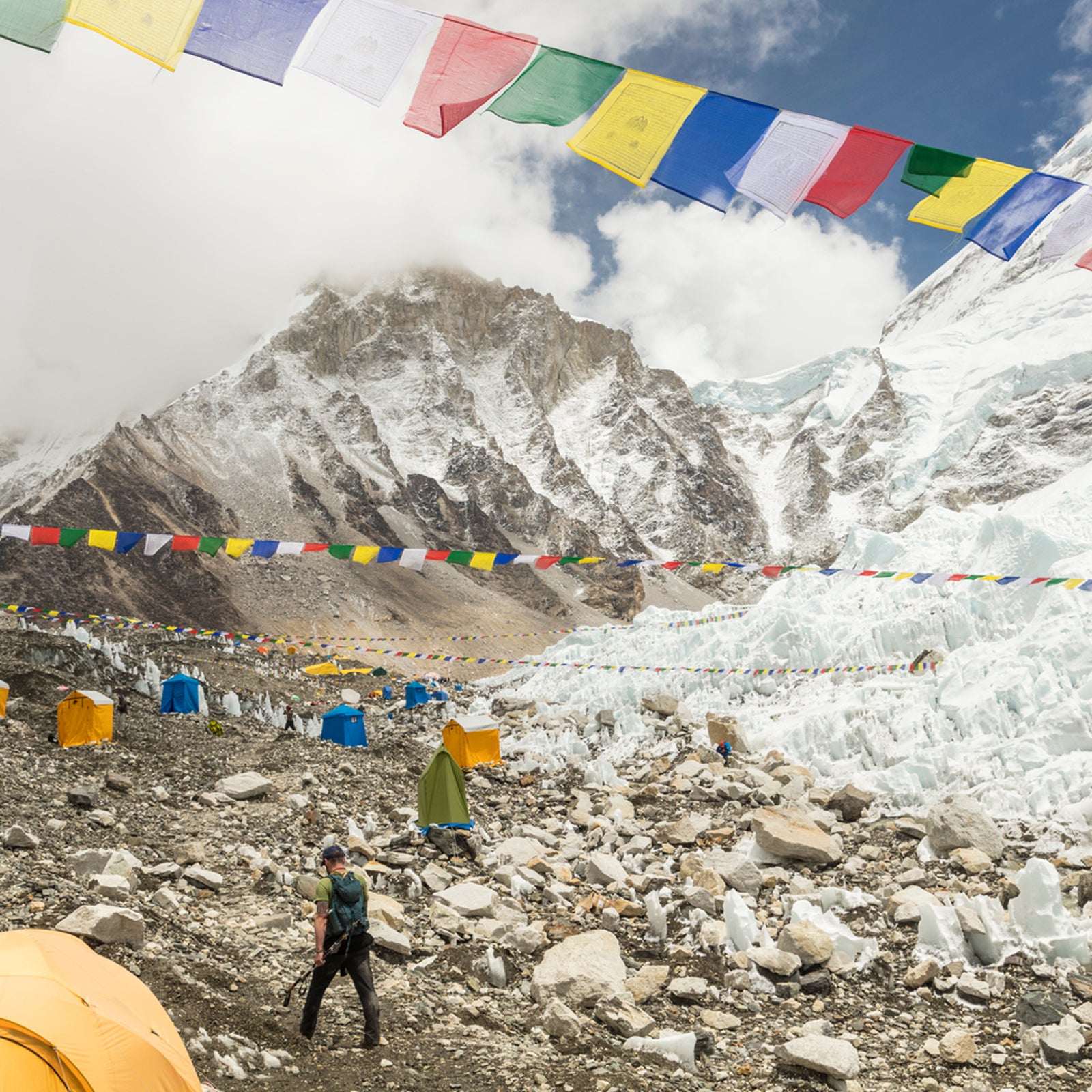On April 15, a climber at Everest Base Camp became the first known case of COVID-19 documented at the foot of the world’s highest peak. It’s hard to get a complete picture of what the disease is doing at Everest right now, but the situation only appears to be getting worse.
“I have taken a helicopter out of EBC back to Kathmandu after 1 day,” Gina Marie Han-Lee, a climber from New York, wrote on Facebook on April 29. “The Covid situation at EBC is a total shitstorm. I had no clue what I was flying into.” On April 28, Polish climber Pawel Michalski also wrote on Facebook that “more than 30 people have already been evacuated with propellers to Kathmandu, with suspicion of pulmonary edema—later found to be positive for coronavirus.”
Two people with close connections to climbers and doctors currently on Everest described the scene this way: “The COVID situation is much worse than anyone knows.” (Both sources wished to remain anonymous, for fear of incurring a climbing ban from Nepal.)
“The Nepal Government is still denying there is a COVID outbreak at Everest base camp, despite emerging evidence,” Tweeted Nepali journalist Rojita Adhikari. “I tested positive soon after I returned from the camp. Why is the government hiding the truth?”
Norwegian climber Erlend Ness was the first known case. On April 15, he was evacuated to Kathmandu, where he tested positive at a hospital. Ness is now out and recovering. Steve Davis, a member of Nirmal Purja’s Elite Himalayan team, also tested positive. In addition, one of Purja’s lead Sherpas was evacuated to Kathmandu and is now in quarantine.
Climbers and guides were well aware of the risks associated with climbing during a pandemic. Several companies chose to sit out the season, fearing an outbreak at Base Camp and the chance of bringing the virus to the isolated Khumbu Valley. California-based Alpenglow Expeditions, New Zealand’s Adventure Consultants, and the UK’s Jagged Globe all canceled their seasons. Many climbers, though, decided the risk was low, especially if they’d been vaccinated. The Nepal government issued strict quarantine and imposed testing regulations for all visitors. Still, most of this was voluntary and not enforced. Many Everest teams spent as little as two days in Kathmandu before flying to the Khumbu.
Despite a few outfitters sitting out the season, Nepal issued a record 408 permits for the mountain this year, breaking the 2019 record of 381, which means there are as many as 1,000 people in Base Camp. It’s difficult to know just how bad things are, though, since the normally tight-lipped Department of Tourism is being even more quiet than usual. (The department did not respond to a request for comment.) In 2019, a photo of a traffic jam midway up the mountain went viral, raising questions about the department’s ability to manage crowds on the peak. Perhaps as a result, the department introduced a slew of new rules this year, including quota and timing regulations for summit attempts and a ban on sharing photos of other climbers. (Many operators told me that they planned to ignore the new regulations, citing safety concerns.)
As of April 29, 3,246 people had died of COVID-19 in Nepal. The same day, the country of 29 million tallied a record 4,831 new infections, taking the total to 317,530, and prompting the government to issue a strict two-week lockdown for the Kathmandu Valley.

